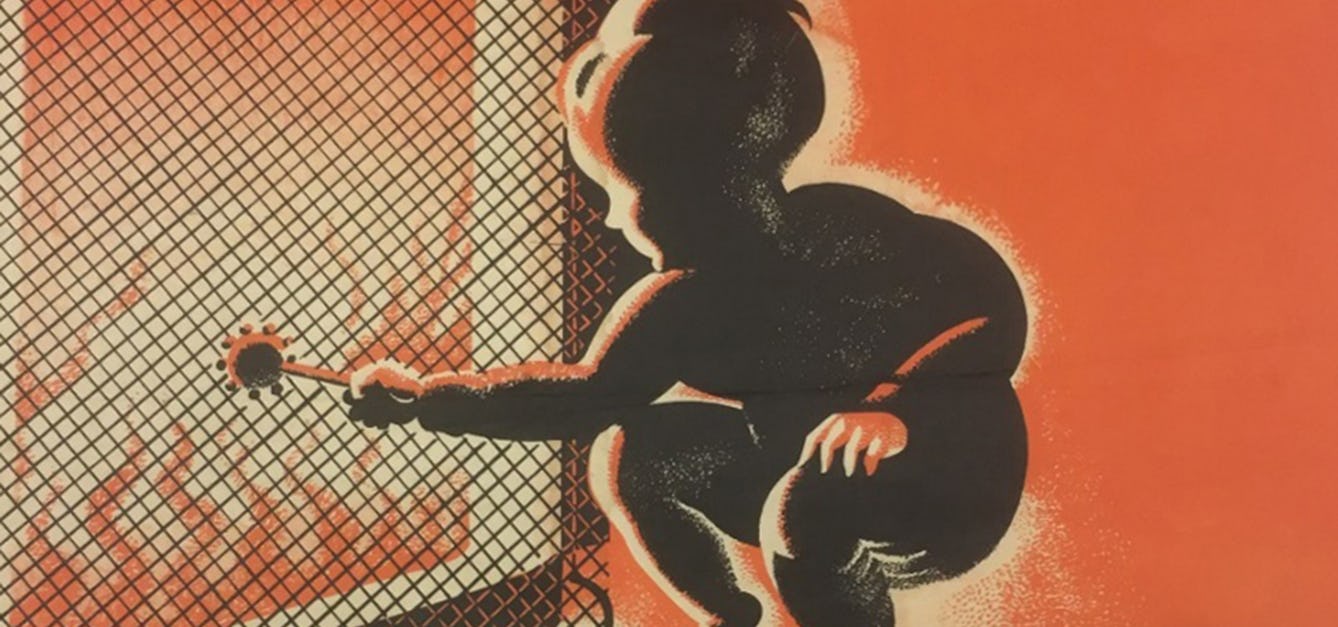Stories

- Article
The rise and fall of a medical mesmerist
Uncover the fascinating story of the doctor who popularised hypnotism as a medical technique, and could name Dickens among his famous friends.

- Article
Chemical highs and psychedelic research
Could recreational drugs make you happy? Kate Wilkinson explores why keen clubber Simon believes taking psychedelics has helped him develop as a person.

- Article
Children in burns prevention campaigns
Whose responsibility is it to prevent accidental burns and scalds in the home? Shane Ewen’s research shows that it’s everyone’s concern.

- Article
Doctors and the English seaside
Fashionable seaside towns in England owe much of their popularity to 18th-century doctors, who advised them to take the 'sea cure'.
Catalogue
- Archives and manuscripts
Association for the Advancement of Medicine by Research
Association for the Advancement of Medicine by ResearchDate: 1882-1892Reference: MSS.5310-5312
- Books
- Online
Report to the Association for the Advancement of Medicine by Research on the relation of micro-organisms to tuberculosis / by W. Watson Cheyne.
Cheyne, William Watson, Sir, 1852-1932.Date: [1883]- Archives and manuscripts
Minutes of the Sub-committee on the Promotion of Research
Date: 1882-1883Reference: MS.5311Part of: Association for the Advancement of Medicine by Research
- Books
- Online
Annual General Meeting, 17th November, 1899, report of Council, 1899, Dr. Pavy's (honorary treasurer) report, 1899, list of members / Association for the Advancement of Medicine by Research.
Association for the Advancement of Medicine by Research.Date: [1899]
- Books
- Online
Owen, Hunter and Harvey : a letter to the Presidents and Council of the Association for the Advancement of Medicine by Research / by the author of Hunter and the stag.
Adams, Charles.Date: 1882





![Paeonia officinalis L. Paeoniaceae, European Peony, Distribution: Europe. The peony commemorates Paeon, physician to the Gods of ancient Greece (Homer’s Iliad v. 401 and 899, circa 800 BC). Paeon, came to be associated as being Apollo, Greek god of healing, poetry, the sun and much else, and father of Aesculapius/Asclepias. Theophrastus (circa 300 BC), repeated by Pliny, wrote that if a woodpecker saw one collecting peony seed during the day, it would peck out one’s eyes, and (like mandrake) the roots had to be pulled up at night by tying them to the tail of a dog, and one’s ‘fundament might fall out’ [anal prolapse] if one cut the roots with a knife. Theophrastus commented ‘all this, however, I take to be so much fiction, most frivolously invented to puff up their supposed marvellous properties’. Dioscorides (70 AD, tr. Beck, 2003) wrote that 15 of its black seeds, drunk with wine, were good for nightmares, uterine suffocation and uterine pains. Officinalis indicates it was used in the offices, ie the clinics, of the monks in the medieval era. The roots, hung round the neck, were regarded as a cure for epilepsy for nearly two thousand years, and while Galen would have used P. officinalis, Parkinson (1640) recommends the male peony (P. mascula) for this. He also recommends drinking a decoction of the roots. Elizabeth Blackwell’s A Curious Herbal (1737), published by the College of Physicians, explains that it was used to cure febrile fits in children, associated with teething. Although she does not mention it, these stop whatever one does. Parkinson also reports that the seeds are used for snake bite, uterine bleeding, people who have lost the power of speech, nightmares and melancholy. Photographed in the Medicinal Garden of the Royal College of Physicians, London.](https://iiif.wellcomecollection.org/image/B0009095/full/282%2C/0/default.jpg)
![Paeonia officinalis L. Paeoniaceae, European Peony, Distribution: Europe. The peony commemorates Paeon, physician to the Gods of ancient Greece (Homer’s Iliad v. 401 and 899, circa 800 BC). Paeon, came to be associated as being Apollo, Greek god of healing, poetry, the sun and much else, and father of Aesculapius/Asclepias. Theophrastus (circa 300 BC), repeated by Pliny, wrote that if a woodpecker saw one collecting peony seed during the day, it would peck out one’s eyes, and (like mandrake) the roots had to be pulled up at night by tying them to the tail of a dog, and one’s ‘fundament might fall out’ [anal prolapse] if one cut the roots with a knife. Theophrastus commented ‘all this, however, I take to be so much fiction, most frivolously invented to puff up their supposed marvellous properties’. Dioscorides (70 AD, tr. Beck, 2003) wrote that 15 of its black seeds, drunk with wine, were good for nightmares, uterine suffocation and uterine pains. Officinalis indicates it was used in the offices, ie the clinics, of the monks in the medieval era. The roots, hung round the neck, were regarded as a cure for epilepsy for nearly two thousand years, and while Galen would have used P. officinalis, Parkinson (1640) recommends the male peony (P. mascula) for this. He also recommends drinking a decoction of the roots. Elizabeth Blackwell’s A Curious Herbal (1737), published by the College of Physicians, explains that it was used to cure febrile fits in children, associated with teething. Although she does not mention it, these stop whatever one does. Parkinson also reports that the seeds are used for snake bite, uterine bleeding, people who have lost the power of speech, nightmares and melancholy. Photographed in the Medicinal Garden of the Royal College of Physicians, London.](https://iiif.wellcomecollection.org/image/B0009094/full/600%2C/0/default.jpg)


